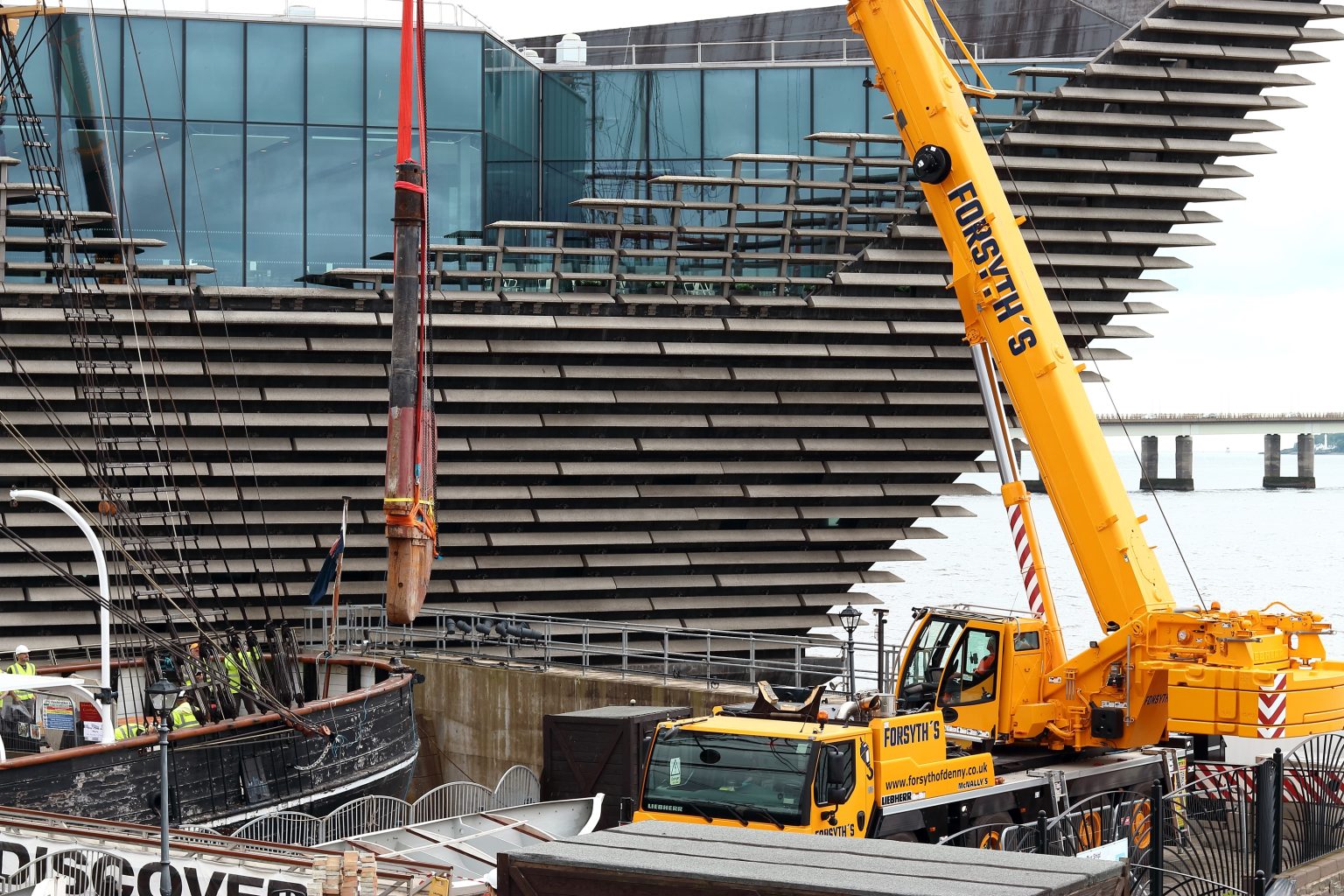RRS Discovery’s 6-tonne Rudder Lifted Through Ship’s Hull
As part of ongoing major conservation works aboard Captain Scott’s Antarctic ship, the vessel’s rudder has been lifted and placed onto the dockside at Discovery Point in Dundee.
Used to steer the ship, the Royal Research Ship (RRS) Discovery’s wooden rudder measures almost 8 metres tall and is estimated to weigh close to 6 tonnes. The rudder was lifted through the hull of the historic ship in the morning of Thursday 20th June, utilising a specially designed rudder well integrated into the ship’s core during Discovery’s build in the dockyards of Dundee back in 1901.
The rudder has now been placed on the dockside at Discovery Point, alongside the ship’s two ‘cuddies’ which were removed in early Spring. The rudder’s temporary dockside placement allows the public to appreciate the size and craftsmanship of this crucial piece of RRS Discovery.
The rudder lift comes as work to conserve the RRS Discovery progresses. At 123 years old and having travelled all over the globe – including three voyages to the Antarctic – the ship now needs expert conservation to preserve its structure and legacy. This work, funded by the National Heritage Memorial Fund, is being undertaken by a range of heritage engineers, lead by JPS Restoration; a Scottish firm with extensive experience in the sector.
The RRS Discovery remains open as usual throughout the year-long conservation works, with visitors invited to get up close and see this historic ship as they have never seen it before. The temporary removal of the ship’s rudder will not only allow for the piece to be repaired, but will further relieve RRS Discovery’s overhanging stern – an immediate focus of the major restoration project – of weight so that it can be repaired effectively, with a cradle-like scaffold expected to be installed in the dry dock in the coming weeks.
This engineering procedure was also undertaken 120 years ago, after the rudder was damaged while freeing RRS Discovery from the grips of the Antarctic ice. Weeks of attempts to loosen the Dundee-built vessel from its position in the Antarctic by use of explosives and manual labour had taken their toll on the wooden rudder, with its replacement being installed on the return journey in 1904.
Ali Gellatly, Director of Ship and Facilities at Dundee Heritage Trust says, “It has been a remarkable sight to see the historic rudder lifted through the well of the ship. This marks a massive milestone in the works being funded by the National Heritage Memorial Fund. I don’t think any one of us present today will forget seeing the rudder lifted skywards in the same method that Robert Falcon Scott and his crew witnessed in Dundee, during Discovery’s trials in 1901 before their famous Antarctic Expedition.”
Since the announcement of the major conservation project aboard RRS Discovery earlier this year, various elements of the ship’s ageing structure have been addressed; including repairing aft skids, removing modern paint from the ship’s sail locker to expose historic wood for repair and replacement, and beginning to de-caulk targeted areas of the deck.
As custodians of the RRS Discovery and two Recognised Collections of National Significance, Dundee Heritage Trust are an independent charity. With less than 2% of their income being publicly funded, the remaining 98% is generated by the charity; through museum admission; fundraising; and hospitality. As the major works on RRS Discovery progress, the charity continue to fundraise to support the cost of the everyday care of this extraordinary Polar vessel.
Find out more about Discovery Point:
www.dundeeheritagetrust.co.uk/attraction/discovery-point
Follow the conservation works:

